The surface of the Earth has been reduced to a gigantic pile of radioactive waste, human beings have been forced to live underground and the victors are carrying out experiments on the vanquished. Since they cannot use space, the scientists in this underground world attempt to exploit the dimension of time. They use prisoners as guinea pigs to send back into the past in the hope of finding resources they can use to ensure the survival of the human race, and to repopulate the surface of the planet by using the present. This is an extended, mobile present, in which the future may already have taken place and the past may still be taking shape.
Plunging us into the future conjectured by the director Chris Marker in his ciné-roman La Jetée, the Digging-Up. Atlas of the Blank Histories project is an attempt to bring to life what in Marker’s short film appears as a succession of images, entrusting the journey into the past to core drilling, which by its very nature epitomises the stratification of time.
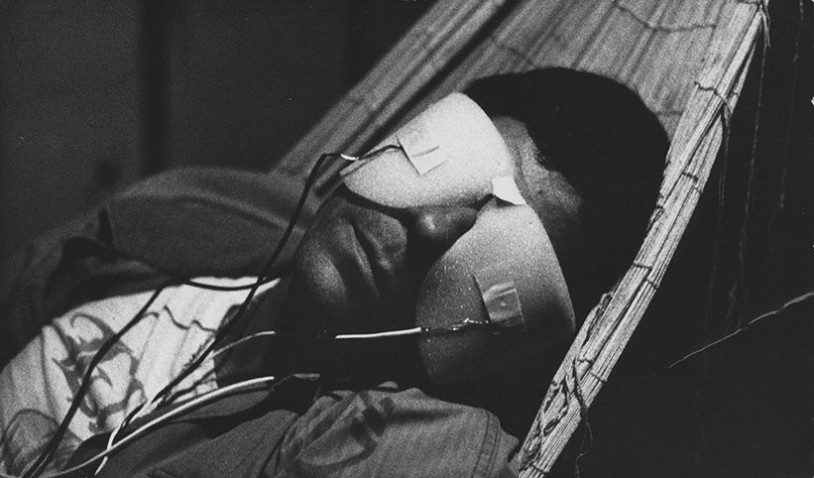
Backward Time Travel. In Black and Blue, her study of postwar French fiction, Carol Mavor describes La Jetée as taking “place in a no-place (u-topia) in no-time (u-chronia)” which she connects to the time and place of the fairy tale. She goes on to say “even the sound of the title resonates with the fairy-tale surprise of finding oneself in another world: La Jetée evokes ‘là j’étais’ (there I was)”. By “u-topia”, Mavor does not refer to “utopia” as the word is commonly used; she also describes an ambiguity of dystopia/utopia in the film: “It is dystopia with the hope of utopia, or is it utopia cut by the threat of dystopia.” [1]
Tor Books blogger Jake Hinkson summed up his interpretation in the title of an essay about the film, “There’s No Escape Out of Time”. He elaborated: What [the main character] finds ... is that the past is never as simple as we wish it to be. To return to it is to realize that we never understood it. He also finds–and here it is impossible to miss Marker’s message for his viewers–a person cannot escape from their own time, anyway. Try as we might to lose ourselves, we will always be dragged back into the world, into the here and now. Ultimately, there is no escape from the present.
1. Mavor, Carol (2012). Black and Blue: The Bruising Passion of Camera Lucida, La Jetée, Sans soleil, and Hiroshima mon amour.
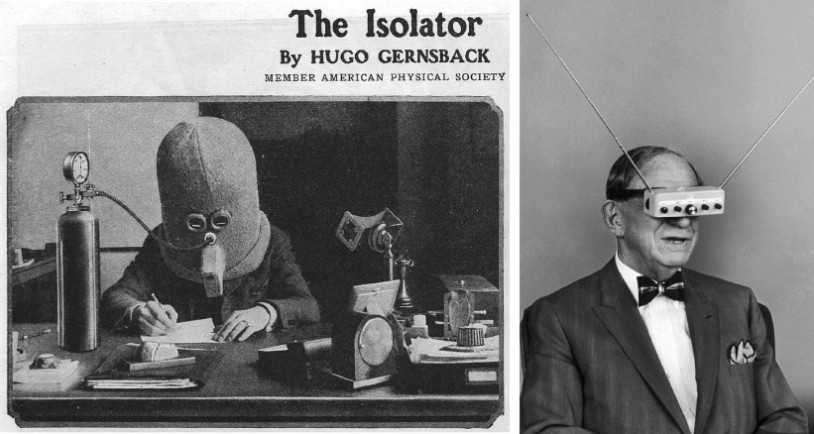
To safeguard the history of our civilisation, and to preserve its memory by counteracting the amnesia process currently under way, the project intends to create over time an “Atlas of Humanity” consisting of an archive of soil samples extracted from different places around the world. The cores constitute the DNA of the places they come from and sampling them makes it possible to ensure reproducibility in the future, thus reversing the past into a sort of memory of what is to come, impressed upon the material extracted from the bowels of the Earth.
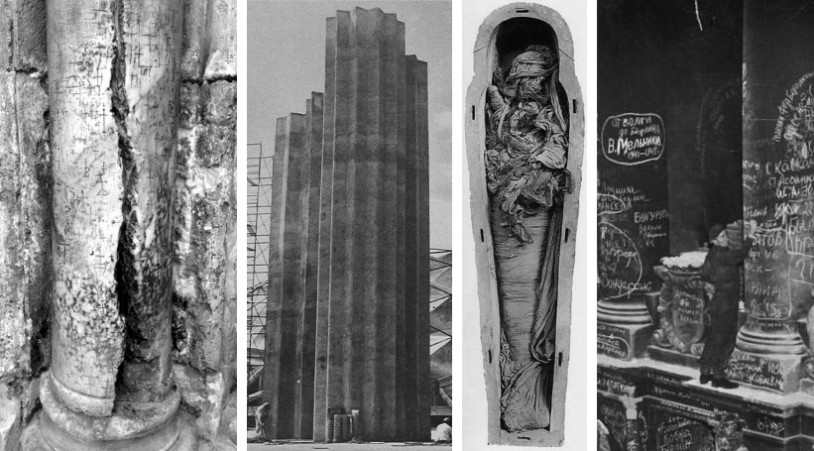
Difference and Repetition. Repetition for Itself. These layers describe different ways in which past and future can be inscribed in a present. As this inscription grows more complicated, the status of the present itself becomes more abstract.
Passive synthesis. Basic processes of the universe have a momentum that they carry into each present moment. A ‘contraction’ of reality refers to the collection of a diffuse ongoing force into the present. Prior thought and behavior, all substance performs contraction. “We are made of contracted water, earth, light, and air...Every organism, in its receptive and perceptual elements, but also in its viscera, is a sum of contractions, of retentions and expectations”. Passive synthesis is exemplified by habit. Habit incarnates the past (and gestures to the future) in the present by transforming the weight of experience into an urgency. Habit creates a multitude of “larval selves,” each of which functions like a small ego with desires and satisfactions.
Active synthesis. The second level of time is organized by the active force of memory, which introduces discontinuity into the passage of time by sustaining relationships between more distant events. A discussion of destiny makes clear how memory transforms time and enacts a more profound form of repetition: Destiny never consists in step-by-step deterministic relations between presents which succeed one another according to the order of a represented time. Rather, it implies between successive presents non-localisable connections, actions at a distance, systems of replay, resonance and echoes, objective chances, signs, signals, and roles which transcend spatial locations and temporal successions. Relative to the passive synthesis of habit, memory is virtual and vertical. It deals with events in their depth and structure rather than in their contiguity in time. Where passive syntheses created a field of ‘me’s,’ active synthesis is performed by ‘I.’ In the Freudian register, this synthesis describes the displaced energy of Eros, which becomes a searching and problematizing force rather than a simple stimulus to gratification.
Empty time. The third layer of time still exists in the present, but it does so in a way that breaks free from the simple repetition of time. This level refers to an ultimate event so powerful that it becomes omnipresent. It is a great symbolic event, like the murder to be committed by Oedipus or Hamlet. Upon rising to this level, an actor effaces herself as such and joins the abstract realm of eternal return. The me and the I give way to “the man without name, without family, without qualities, without self or I...the already-Overman whose scattered members gravitate around the sublime image”.
Empty time is associated with Thanatos, a desexualized energy that runs through all matter and supersedes the particularity of an individual psychic system. Deleuze is careful to point out that there is no reason for Thanatos to produce a specifically destructive impulse or ‘death instinct’ in the subject; he conceives of Thanatos as simply indifferent.
Gilles Deleuze, Difference and Repetition, 1968
The project by Lara Favaretto is based on the idea of telling a story by subtraction, in which nothing new is created: core-boring involves retrieving a portion of the existing stratified subsoil, and its historical, chemical, and physical analysis, and then archiving it, bringing out the memory it contains.

The starting point of the project is an investigation of a particular territory, in search of specific areas where the extraction is to be made. These restricted areas are not selected by means of physical exploration, but rather by consulting experts in various sectors – geologists, archaeologists, and historians, as well as writers and researchers – together with local people, who are the keepers of ancient stories, sayings and legends that are often unknown to the wider world, but all inextricably linked to the memory of those places.

The Allegory of the Cave. The Theory of Forms: One of Socrates’ (and Plato’s) chief ideas was that of forms, which explains that the world is made up of reflections of more perfect and ideal forms. The material world, the one we can see, touch, hear and smell, is really just half-seen images of the reality of the forms. Relying on your physical senses alone - trusting what you see, for instance, is, to Socrates, making yourself effectively blind. The world we see is only a reflection of the forms the world represents (and not even that accurately). A form, whether it’s a circle, or a table, or a tree or a dog, is, for Socrates, the answer to the question, What is that? Only understanding forms can lead to true knowledge.
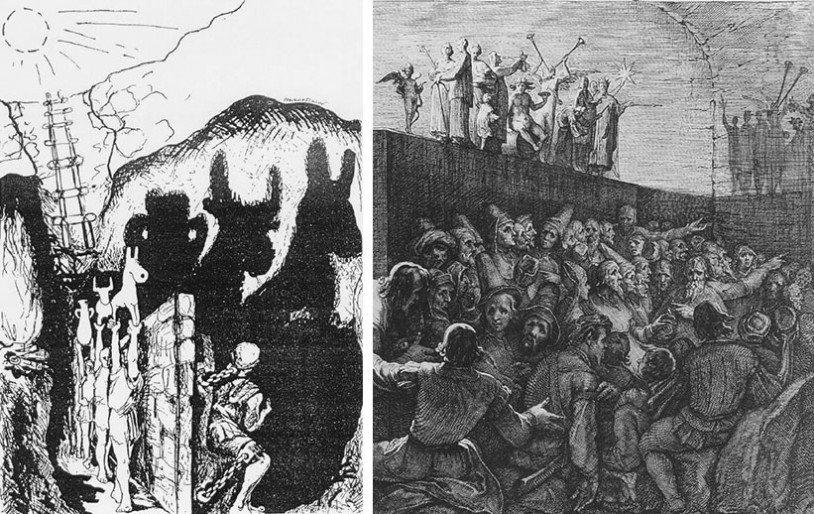
The investigation makes it possible to map out sensitive areas, where traces of these events are preserved, hidden underground, and then brought back to light by core boring. These are forgotten, minor events, and “secondary” stories that flow alongside history and that, together with history, have remained imprinted and sedimented in the ground.
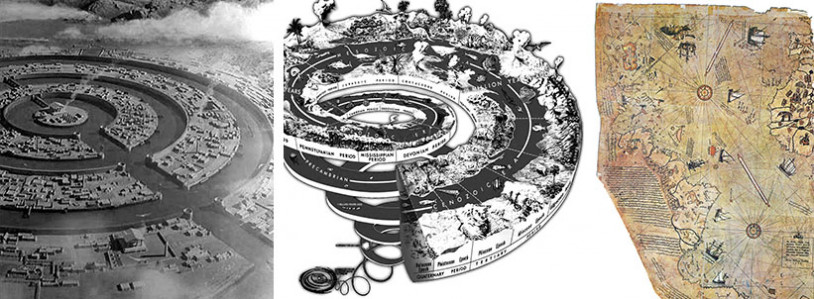
The Civilization Buried Under Layers of Ice The prolific writings of Plato continue to mystify readers, even to this day. In 355 BC, Plato pontificates to that of Atlantis, a great civilization that possessed advanced technological resources and one that was lost to time. For centuries, man has continued his quest to find Atlantis with no avail. As technology continues to flourish, the efforts to pinpoint this ancient site follow in tow. These endeavors have led explorers to the discovery of a copious amount of underwater cities.Let us consider the implications held by that of the Piri Reis map. Proven as a genuine document, the Piri Reis map dates back to 1513 with a primary focal point of the western coast of Africa, the eastern coast of South America, and the northern coast of Antartica. Crafted nearly 300 years prior to the discovery of Antartica, the Piri Reis map displays the Antarctic coast in stunning detail, as it would have been seen without the impact of glacial ice. How is this possible? Piri Reis offers his hand written explanation on the map itself – openly admitting that the map is not an original work, but more so a copy of a much older map. This suggests that the cartographers who surveyed the coast and crafted the map, would have done so at the end of the last ice age, as this was the last known epoch that warranted a lack of coastal ice. It has been proposed that this is possible, as Antartica was located approximately 2,000 miles further north, offering a more tempural climate. The fossil records obtained from Antartica confirm the existence of plant and animal life that would require a drastically different climate to thrive in. Based on this hypothesis, is it possible that what we know as Antartica is actually the lost continent of Atlantis? Is it possible that Atlantis has been staring us in the face for centuries and man has been looking in the wrong areas?
“The Minoan Eruption”: this total catastrophe, taken together with the collapse of the volcano in the eruption, gave rise to the legend of Lost Atlantis
The territory and its past are meticulously researched and explored from various interrelated points of view (scientific, political, social, economic, and historical, but also literary, philosophical, science-fiction, cinematographic, and musical) and the stories that emerge from this are scrutinised by a committee of experts. This leads to a selection of those that are most significant for the purposes of the project and involves physically bringing them up from the subsoil by means of core boring.
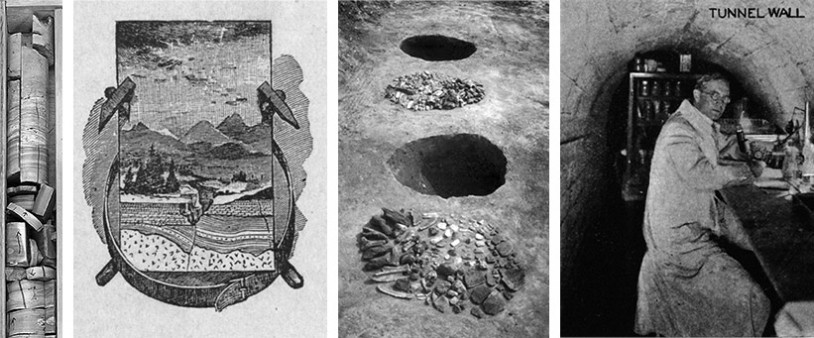
How Modernity Forgets
1. Innermost, or most essential part of anything.
2. Also called magnetic core. Electricity. the piece of iron, bundle of iron wires, or other ferrous material forming the central or inner portion in an electromagnet, induction coil, transformer, or the like.
3. (in mining, geology, etc.) a cylindrical sample of earth, mineral, or rock extracted from the ground by means of a corer so that the strata are undisturbed in the sample.
4. The inside wood of a tree.
5. Anthropology a lump of stone, as flint, from which prehistoric humans struck flakes in order to make tools.
6. Carpentry a thickness of wood forming a base for a veneer.

The stories create a new map of the territory, with tales and testimonies, memories and anecdotes, forming a map that can be superimposed on the geographical one. When the two are combined, they constitute a means for gaining an in-depth, but also unusual, singular understanding of the territory. The map contains a pattern of unassuming, whispered stories, of marginal but significant episodes from different periods that can be found in books or in oral tradition, constituting the preliminary and fundamental phase of the project.

These stories, which are stored both in memories and in the ground, in time and in space, will be told solely by a work of subtraction, in their material form as it appears in the compressed core.
The depth of the bore depends on where it is carried out; once extracted, each individual core is placed inside a box that is suitable for its conservation. These are standard containers that are normally used for this purpose. The date and geolocation coordinates of the extraction site are indicated on the lid of each container, together with the data gleaned from an examination of the material by a geologist, who also offers an interpretation that goes down through the material components and the history of the strata in the subsoil.

The Language of Layers. In the 1840s, Hitchcock suspected laminated sediment in North America could be seasonal, and in 1884 Warren Upham postulated that light-dark laminated couplets represented a single year’s deposition. Despite these earlier forays, the chief pioneer and populariser of varve research was Gerard De Geer. While working for the Geological Survey of Sweden, De Geer noticed a close visual similarity between the laminated sediments he was mapping, and tree-rings. This prompted him to suggest the coarse-fine couplets frequently found in the sediments of glacial lakes were annual layers.

Just as one can assess the age of the tree by counting the number of rings, so one can identify the different ages of the subsoil by examining its layers: a horizontal reading that turns the core, through the gradual vertical examination of its superimposed layers, into a timeline – a spatial materialisation of the passage of time.
The analysis provided by the geologist is key, since it provides a real possibility of recreating, at some point in the future, the same chemical composition of the Earth in a specific geographical area and in a particular period, with a trace of the DNA of the events that shaped it. If we look into a hypothetical post-apocalyptic future, the core sample will act a relic, as the keeper of the Earth’s DNA, as well as a sort of guinea pig that can be investigated and experimented on.
The core samples are displayed horizontally, on a table designed by the artist, which only varies in terms of its size, depending on the different depths at which the samples were taken and thus on the different lengths of the containers. The size of the table top is the same as that of the box.
The following information is provided about each core sample: the date of extraction, details about the geographical site (the nation, region, province, city, and locality) and the analysis made by the geologist. This provides the public with not only the actual core and where and when it was extracted, but also a greater understanding of the materials it consists of.
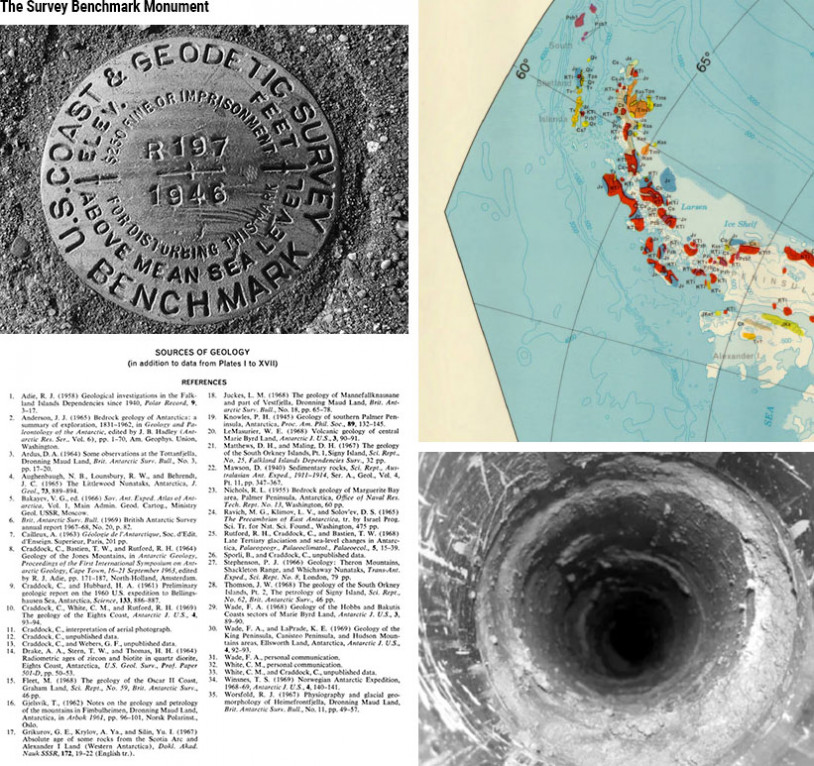
Each hole drilled in the ground in order to extract the core is sealed with a plaque made of the metal commonly used in the local area. The plaque covers the entire hole and is fastened to the ground after immersing its below extension in a casting of cement poured into the cavity. The way the plaque is made and placed is decided on each occasion, depending on the methods adopted by the local workers, on the location of the core drilling, and on the type of subsoil.
Each plaque bears the following information, written in the local language: the title and logo of the project, the date of extraction, the number of the core sample in the group of extractions carried out in that region, which are indicated in chronological order, and a detailed indication of the geographical site: the nation, region, province, city, location, and depth of extraction.
When the exhibition is over, the cores are placed in a special iron container, to be preserved and passed on to future generations. Once it is complete, the container is sealed and buried, thus turning it into a Time Capsule.
A plaque is placed where it is buried, like a sort of local stone tombstone, with an engraving bearing the dates of burial and disinterment, which is set for a century later. The plaque is the same size as one side of the buried container, as though it were its shadow projected onto the surface of the earth.

Preserving the Crypt of Civilization. Thornwell Jacobs , who passed in 1956, left this “Message to the Generations of 8113,” on a plague outside the room: “This Crypt contains memorials of the civilization which existed in the United States and the world at large during the first half of the twentieth century. In receptacles of stainless steel, in which the air has been replaced by inert gasses, are encyclopedias, histories, scientific works, special editions of newspapers, travelogues, travel talks, cinema reels, models, phonograph records, and similar materials from which an idea of the state and nature of the civilization which existed from 1900 to 1950 can be ascertained. No jewels or precious metals are included. We depend upon the laws of the county of DeKalb, the State of Georgia, and the government of the United States and their heirs, assigns, and successors, and upon the sense of sportsmanship of posterity for the continued preservation of this vault until the year 8113, at which time we direct that it shall be opened by authorities representing the above governmental agencies and the administration of Oglethorpe University. Until that time we beg of all persons that this door and the contents of the crypt within may remain inviolate.”
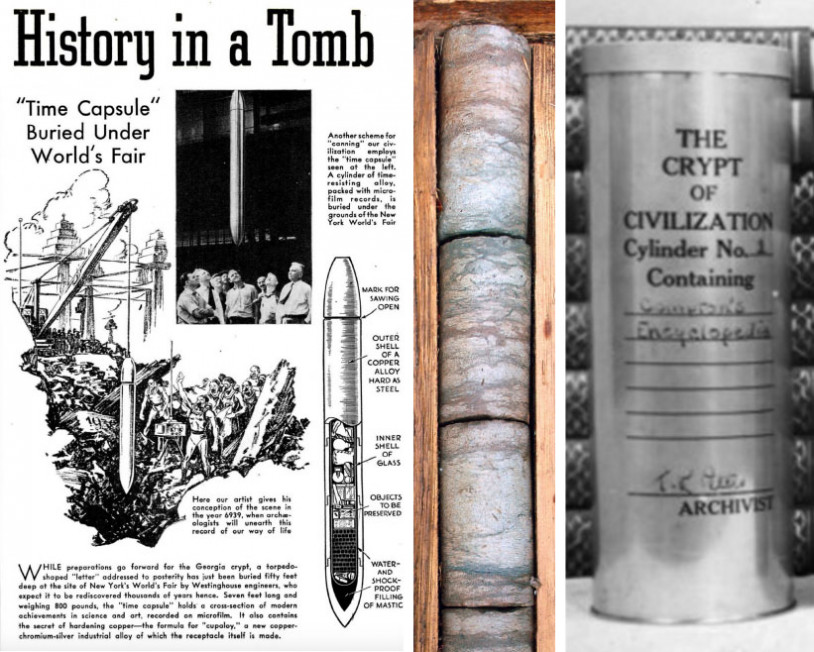
The data of the Time Capsule are sent to the International Time Capsule Society (ITCS), an institution founded in 1990 in Atlanta, Georgia (USA), with the aim of promoting the in-depth study of Time Capsules. These capsules are used to convey the memory of a particular historical period to posterity, with a selection of objects that are considered representative of life at the time. In this case, the Time Capsule does not have the task of handing down the memory of a specific period in the form of emblematic objects, but rather of giving posterity a “fossil” memory in the form of subsoil samples, like a black box from a distant age that has settled and made its recordings. The ITCS, where the container that holds the core samples is registered by filling in a special form, maintains a database of all the time capsules buried across the world.
The progress of the project, in the various stages described here, is governed by a contract drawn up between the artist and the institution that intends to put it into practice. In view of the period of time involved, the contract covers the completion of the project in its entirety, all the way to the exhumation of the capsule in a hundred years’ time.
While all the core samples are placed together in a single container, which is then buried in a particular place, the plaques that seal each hole drilled for the coring are scattered across the surface of the Earth, forming a constellation on the actual land, tracing out a new, original map. This map does not represent geography, but is the result of a choral story, an atlas of neglected stories. Each core sample creates a portrait of a place, bringing it to the surface, making it possible to reconstruct the history and identity of a city by following the various steps that, over time, have led to what we see today.
Digging-Up first came about as part of the Momentary Monument series, of which it is the last chapter: with the subtitle The Core, the project was first carried out in Kabul in 2012, on the occasion of dOCUMENTA (13). The procedure has evolved over time and, when it was performed in Cappadocia (2017) and in Pompei (2019), it acquired what is now its final form, as described and explained here.
The site you are browsing is the virtual counterpart of the material execution of Digging-Up, a project that is currently under way. As well as monitoring the progress of the work, the site also contains research data and the materials that have been collected, including the individual stories behind each core boring.
The site is a dynamic, constantly updated platform, as well as a place for reflection on, and analysis of, the various themes, theories and ideas that gave rise to the project, while the material collected here is made available to inspire new studies, ideas, theories, and stories. Many definitions and interpretations can be given to core boring when it is viewed from different perspectives, especially when one considers the short-circuit between the dimensions of space and time, but also, within the second dimension, between the past, present and future that it embodies.
The aim of the project is to achieve a full understanding of the various definitions, and the complexities and multiple meanings of core drilling and its self-sufficiency: a palimpsest of human history, to which everything can be traced back.


